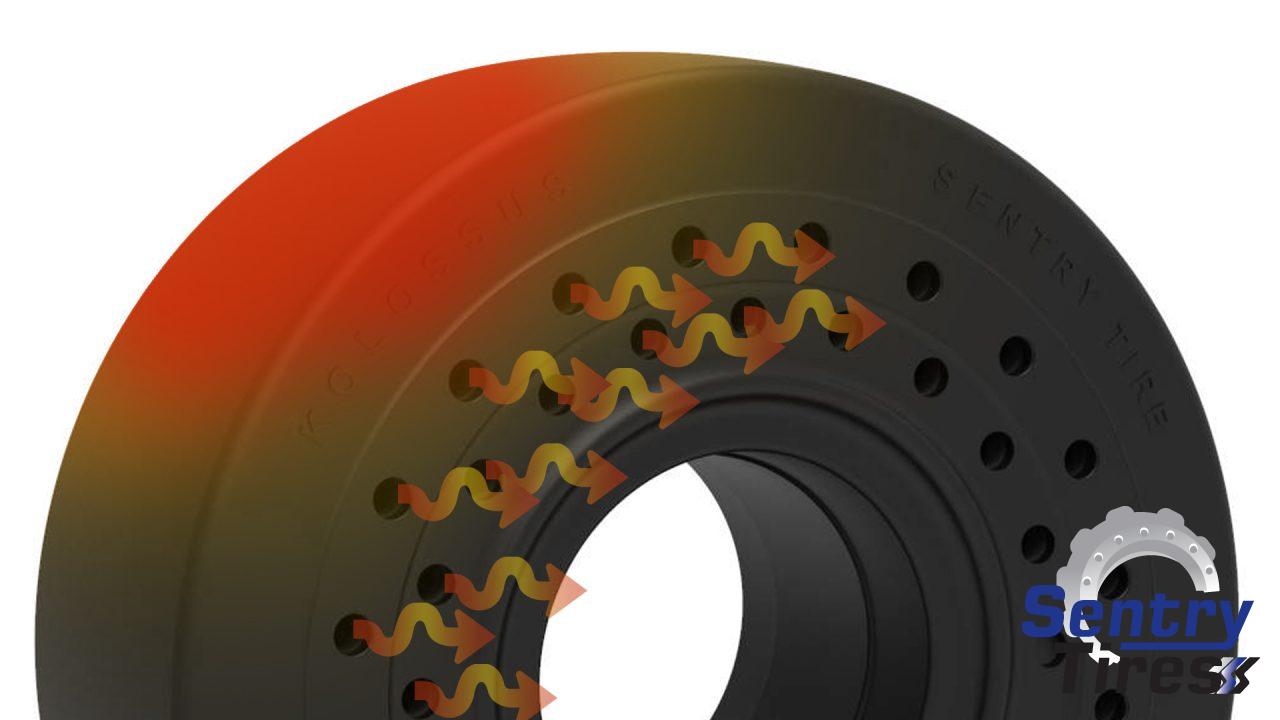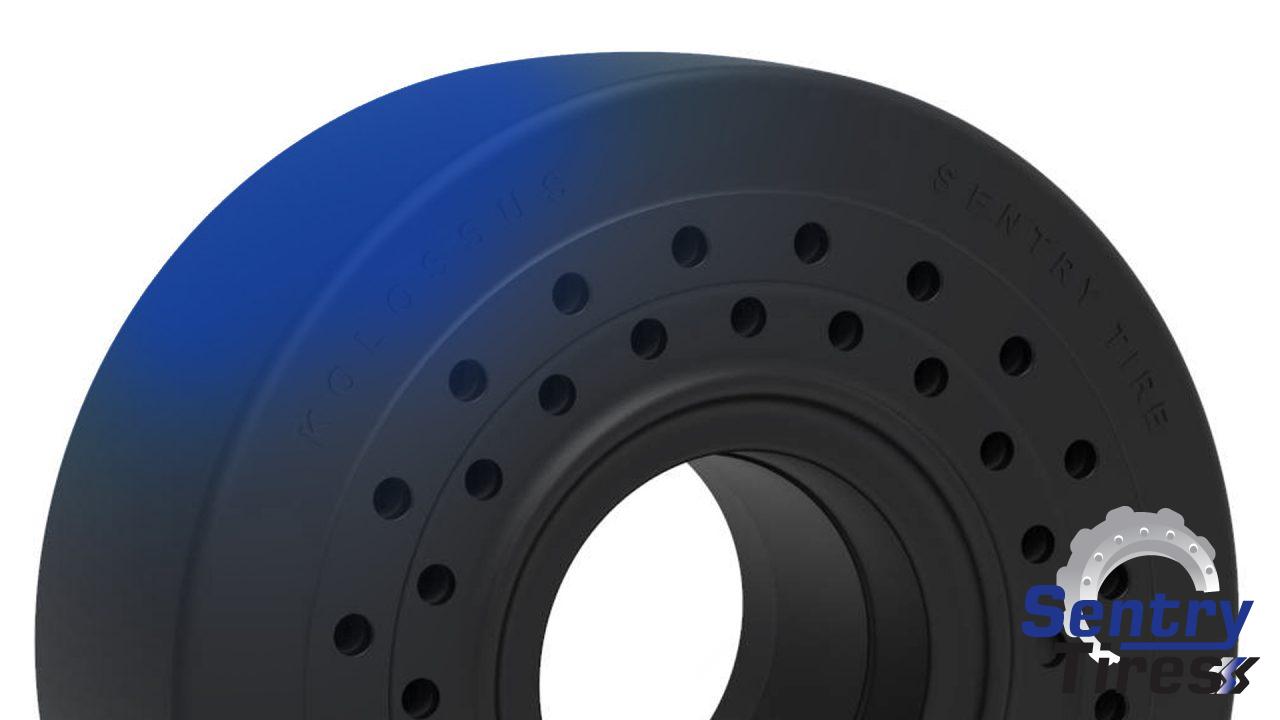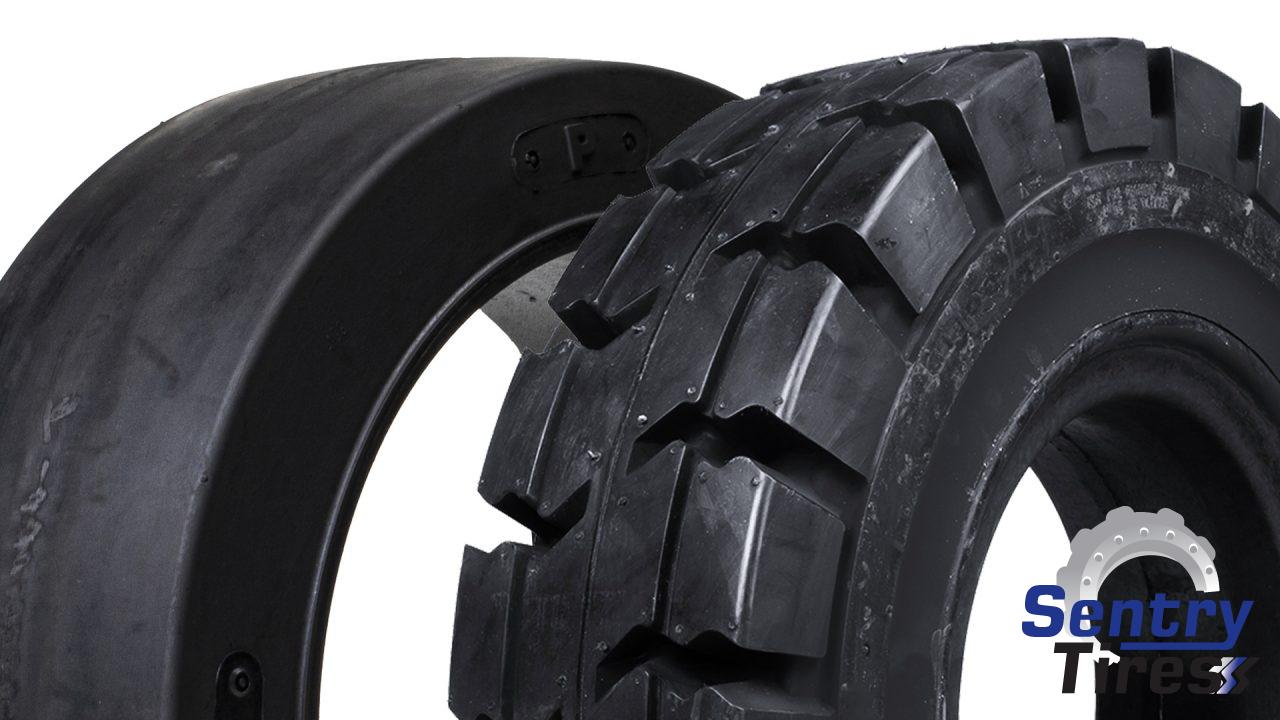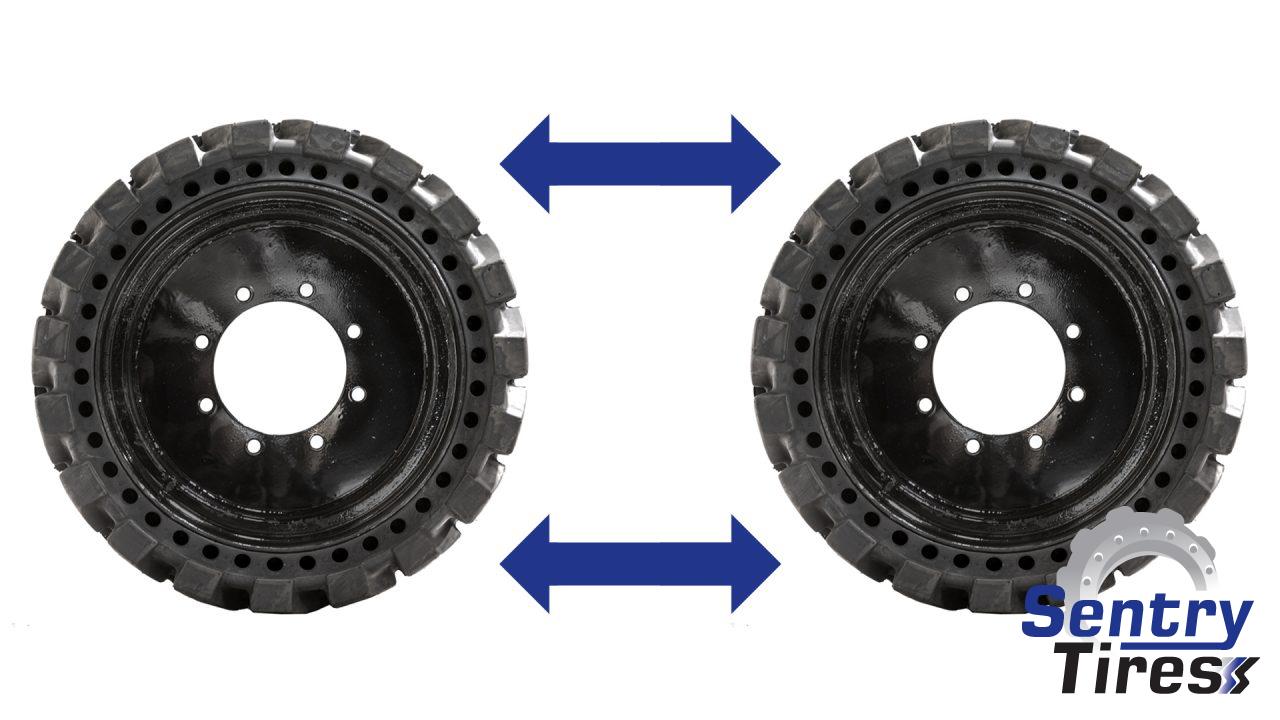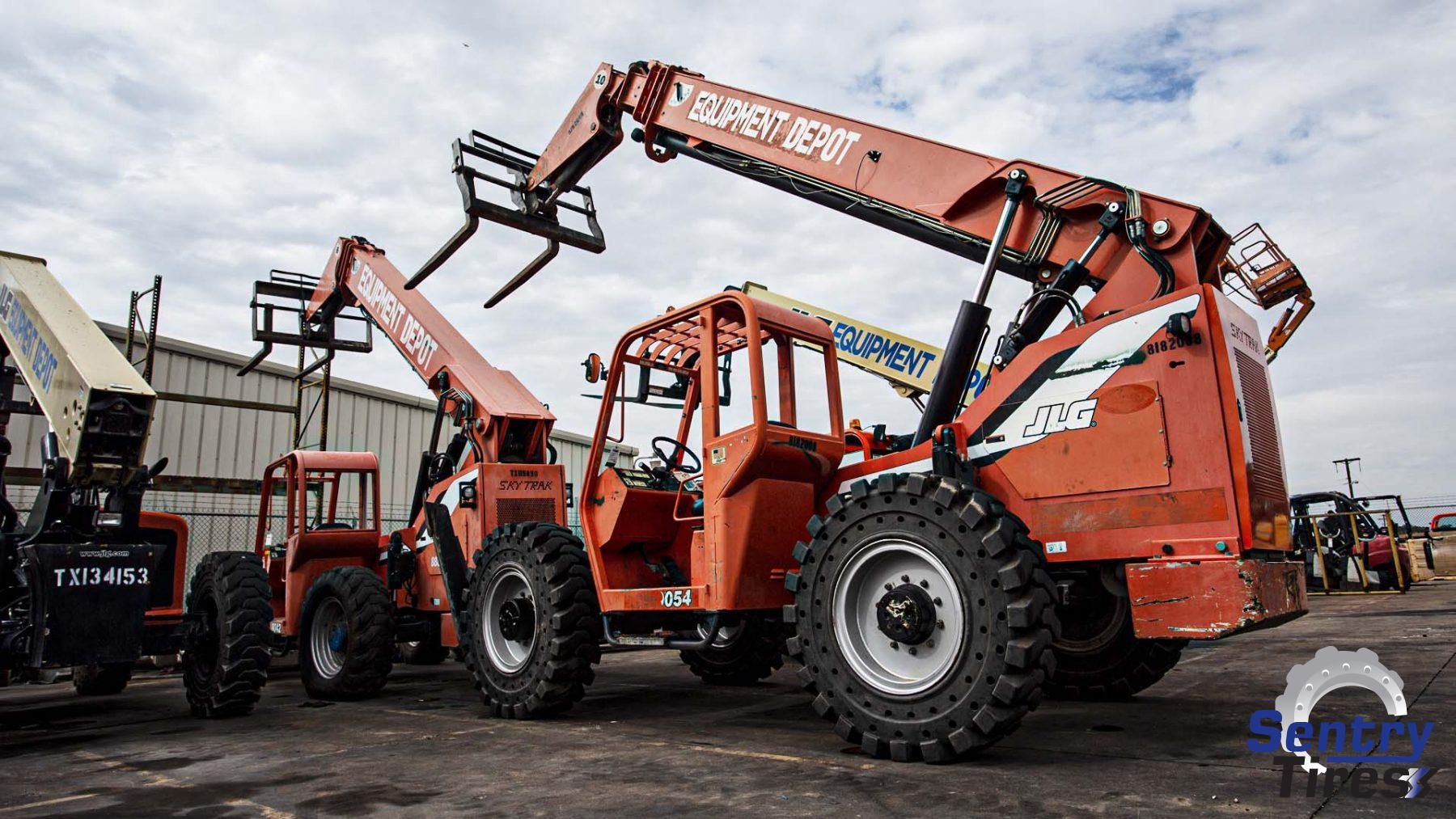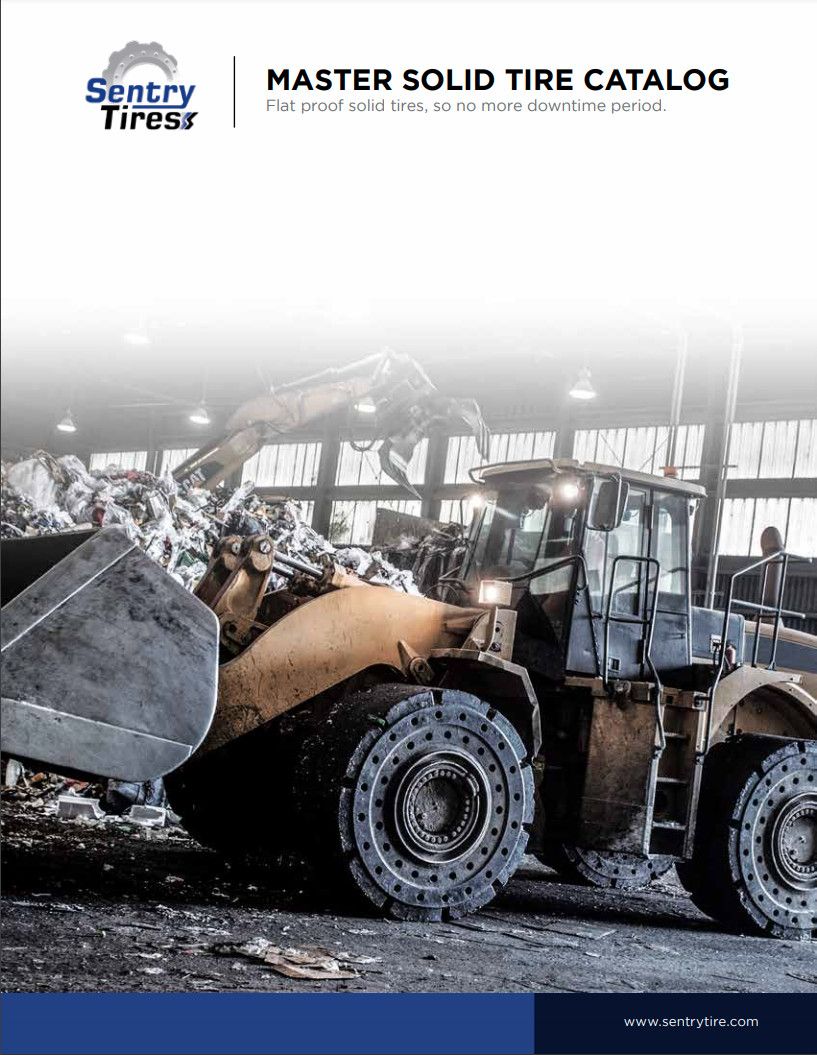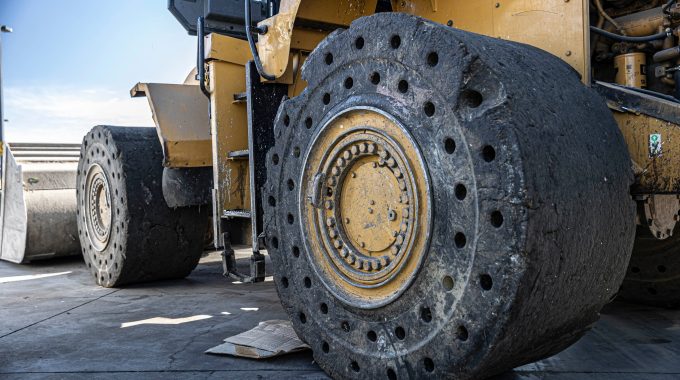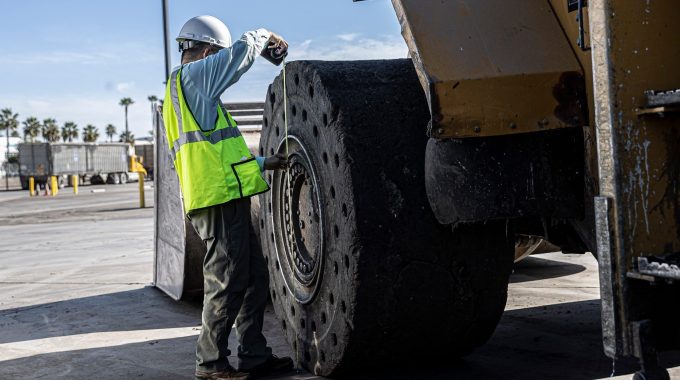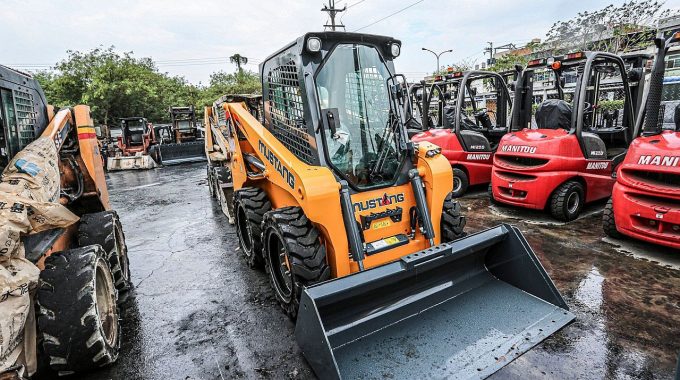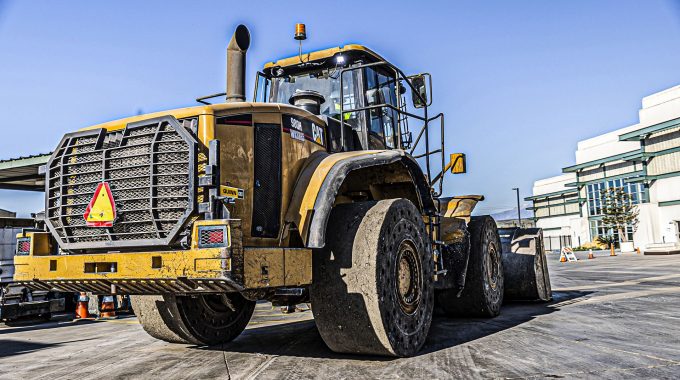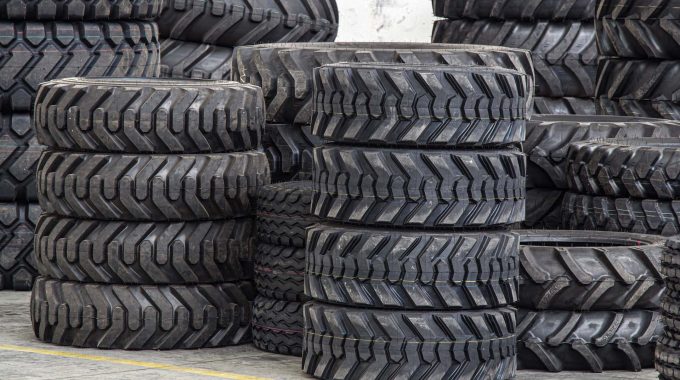
sentry tire
Best Practices to Maximize Solid Tire Life
We have aperture holes in the design of our tires to release this heat, but keeping this principle in mind may help maximize the life of your tires. In general, solid tires require an equal amount of resting time between stops. For example, if you run your tires consistently without rest for 20 mins, you would need to ensure the tires have 20 mins to cool to release the heat. Solid tires are not designed to run 24 hours a day, 7 days a week consistently. We can customize our rubber compound for high heat or usage applications, such as furnace plants.
To get the maximum life out of your tire, you need to achieve the right balance of grip and slippage. Depending on the environment you are operating in, make sure that you use the proper tread pattern to ensure that there is enough traction or slippage necessary for your job. For example, if you are in a slow-moving, indoor warehouse-type application, then a no-traction tire would be ideal since you can get the maximum amount of rubber on the tire. In contrast, if you are consistently outdoors, then an aggressive tread would provide the best wear. This is because a smooth tire would go through many more rotations due to “slippage” per foot than a traction tire. Using the right tire tread for the right job will ensure you get the most powerful life out of your solid tires.
On larger OTR tires (usually 25 inches of wheels and above), regular tire rotation is essential to get the maximum life out of your tires. We have seen an increase in tire life in excess of 25% on some applications. Generally, we recommend tires to be rotated if the tires are more than 2 inches difference in OD. The exact time and rotation positions may vary based on your application and machine.
As always, feel free to reach out to our sales team with any questions about what tires might be suitable for your application or how to rotate your tires.

